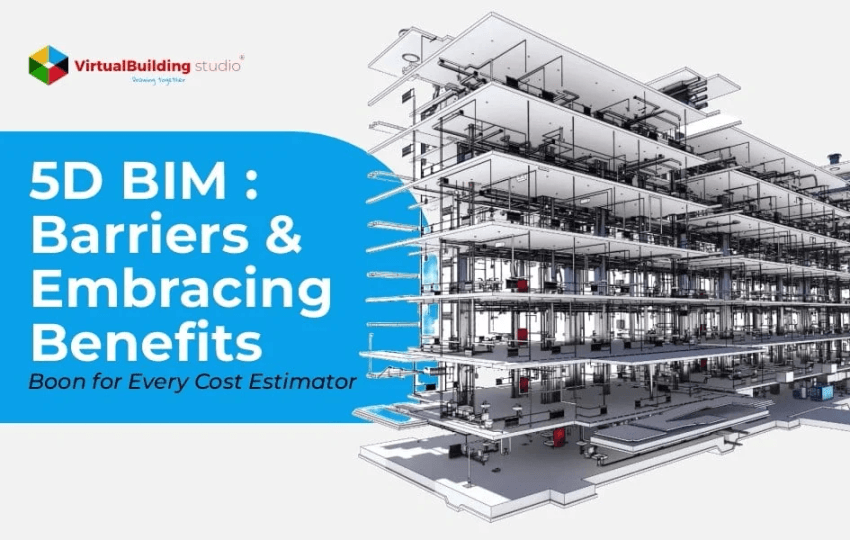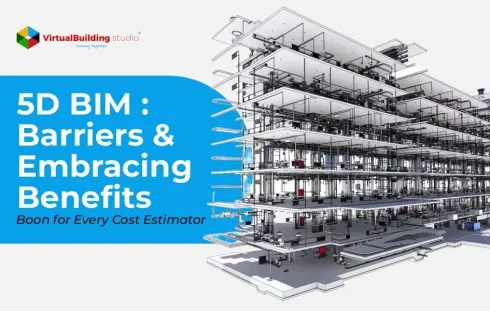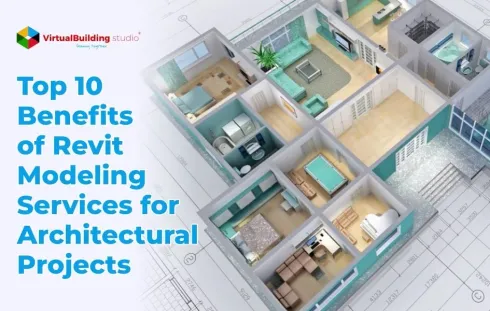
In the dynamic realm of the Architecture, Engineering, and Construction domain, the adoption of BIM Modeling services has drastically transformed the project management and collaboration process. The visualization sector has moved past the three-dimensional plane and has provisions to deal with multiple dimensions for a more profound design experience.
The integration of the fifth dimension, commonly known as 5D BIM modeling, demonstrates a paradigm shift in the digital modeling process by incorporating cost estimation.
Understanding 5D BIM
5D BIM is a five-dimensional project visualization including budgetary and cost analysis related to the project. It deals beyond conventional 3D modeling and spatial coordination, adding cost and time factors to the equation.
The integration of cost data and scheduling information allows the stakeholders to comprehend, analyze, and discover a clear representation of the project, and record the impact of changes in the project cost.
The technology adds new layers of metadata to the project model. 5D BIM modeling services are a holistic approach that facilitates more accurate and efficient decision-making throughout the project lifecycle.
Benefits of 5D BIM Modeling Implementing
5D BIM Modeling has several benefits to offer the cost estimators. The 5D BIM estimation services facilitate a smooth cost and budgetary analysis followed by streamlined decision-making and project execution. Here are the top 5 benefits of implementing these services:
Enhanced Accuracy of Cost Estimation & Forecasting
The fundamental benefit of the 5D BIM estimation services for cost estimators is its ability to generate reliable and accurate cost estimates. The BIM implementation identifies exact quantities of building components from the 3D model, facilitating precise cost estimation and forecasting.
The probability of discrepancies and losses owing to miscommunication and mismanagement is minimized due to advanced and real-time estimation of project costs.
Better Communication and Collaboration
The BIM model is an advanced technology that articulates a common workspace for all stakeholders, fostering improved collaboration and communication. The involved stakeholders can work simultaneously on a shared platform and make amendments together to amplify the collaboration process.

This working methodology ensures the alignment of stakeholders with the project’s financial aspects. BIM services develop a transparent and collaborative platform, minimizing the risk of miscommunication.
Life Cycle Cost Analysis
5D BIM also enables the calculation of expenses throughout the building lifecycle, after the construction phase. The analysis includes data related to maintenance, operation, and renovation services.
This farsighted perspective empowers the stakeholders to make informed decisions considering the entire lifecycle of the asset. This process optimizes both initial construction costs and ongoing operational expenses.
Elaborated Quantity Take-Offs
As per the survey reports, estimators invest an enormous amount of time in creating quantity take-offs. Incorporating 5D BIM technology into the process generates automated quantity take-offs for the estimators, saving time and energy spent in developing BOQs. The elimination of manual work reduces the chances of errors and results in more accurate results.

The financial estimates are usually connected with work and time, leading to faster resource quantification and reduced on-site issues due to finances. This approach minimizes the possibility of budget overruns and delays.
Time Savings and Faster Decision-Making
The cost estimators can efficiently generate detailed and precise cost estimates without the need for manual data entry and reliance on disconnected spreadsheets.
The accurate information generated with BIM induces transparency in the modeling process and allows the stakeholders to arrive at informed decisions.
This beneficial feature translates into faster decision-making and workflow. With the streamlined budgeting and estimation procedure, the process of material procurement becomes easier. The stakeholders can refer to quantity take-offs and bills of quantities to get a hold of updated material lists and act accordingly.
Challenges to 5D BIM Modeling Implementing
Despite the several benefits 5D BIM offers, the adoption process is slow-paced owing to different barriers that come along. These barriers make it challenging to incorporate 5D BIM modeling services into a real-life project. Here are the unique challenges to the use of 5D BIM:
Initial Investment and Cost
The primary barrier to 5D BIM implementation is the initial cost and investment for the project. The costs involved for software, training, and infrastructure are huge, and many firms, especially smaller ones, may find it difficult to allocate these required resources.
Moreover, the contributions from different stakeholders take an enormous amount of time as everyone should be on the same page. The more time taken to initiate the project, the higher the cost. The increase in the cost and time window reduces the likelihood of 5D BIM adaptation.
Difficulty in Data Integration
Seamless data integration is a crucial requirement for the successful implementation of 5D BIM. The data is extracted from various sources including construction, design, and financial systems.
While working with legacy systems that do not easily communicate with modern BIM platforms, achieving data integration can be a difficult task.
Resistance to Change
A perennial obstacle in the Architecture, Engineering, and Construction industry is resistance to change. The professionals are attuned to using conventional methods and hesitate to embrace the digital revolution that comes into the picture with BIM Modeling services.

The barrier posed by change is the aversive behavior of the project team toward transformed workflow and technology. The evolving digital space requires the team members to acquire a new skill set and work entirely on a different domain.
Effective change management strategies and clear communication about the benefits of 5D BIM can help in altering the unwavering attitude towards change.
Lack of Skill Set and Software Training
A well-equipped workforce is significant to navigate the advanced landscape of Revit BIM Modeling services and understand the intricacies of cost estimation in 5D BIM. The lack of knowledge and software training pose major challenges in the adoption of 5D BIM for an architectural project.
The stakeholders should be efficiently trained to harness the maximum potential of BIM. Furthermore, the absence of a single software catering to all requirements and offering various features leads to a complex BIM modeling process with multiple software.
Complex Project Coordination with Increased Exposure Risk
With the increase in project complexity, the coordination and management of data across a multitude of dimensions become intricate and challenging. The difficult and crucial step of the process is to maintain the accuracy and consistency of data throughout the entire project lifecycle.
The legal issues, such as the ownership of BIM models, the right to access project information, and control of the BIM-generated information, are a major debate for the AEC sector.
For a project with any errors, the accountability of stakeholders is diluted, discouraging the company from using 5D BIM.
How 5D BIM Modeling is a Boon for Every Cost Estimator?
Cost estimation and budgetary analysis is a manual and subjective process until 5D BIM is introduced to the modeling process. It empowers data-driven decision-making with real-time information, allowing accurate budgeting and resource allocation.
This accuracy, precision, and detailed information with minimal expenditure of time and energy is a boon for every cost estimator. The saved time can be directed towards facility management by the estimators.
It not only benefits the estimators but also boosts the confidence of the stakeholders with its transparent process. It ensures better financial clarity and understanding of the project finances to the owners, investors, and project sponsors.
Conclusion
Implementing 5D BIM services signifies a transformative leap towards more efficient, accurate, and collaborative cost estimation processes. It brings unprecedented benefits to the building lifecycle and resolves budgeting-related matters on a larger scale. Despite the challenges associated with 5D BIM, it can be a nurturing and beneficial technology for cost estimators and the project.




